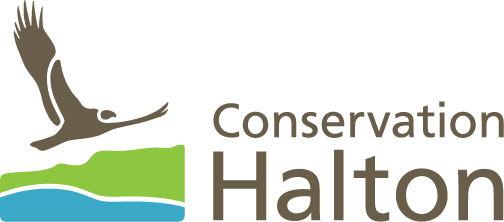The Clean Water Act, 2006, its regulations and the Technical Rules: Assessment Report, prepared by the Ministry of the Environment, require the completion of technical studies to support the outcome of source protection planning.
Some of these studies were completed by consultants retained by partner municipalities and others by source protection staff. Copies of the reports of the findings of their studies can be downloaded using the following links.
If you require a copy of any of the following documents in another format, please e-mail sourceprotection@hrca.on.ca or call 905-336-1158 extension 2260.
Wellhead Protection Area Delineation and Vulnerability Assessment
A wellhead protection area (WHPA) is an area on the ground surface that reflects a zone in an aquifer where groundwater is flowing to a pumping well. Activities undertaken in this area may release pollutants that could seep into the soil and contaminate the groundwater used by both domestic and municipal wells. Halton Region and the City of Hamilton retained Earthfx Incorporated to delineate these areas for a 25 year period of groundwater flow and to assess the vulnerability of the water supply to contamination from activities carried out by people on the ground’s surface.
- Vulnerability Assessment and Scoring of Wellhead Protection Areas, City of Hamilton, Ontario. Prepared by Earthfx Incorporated and dated April 2010 (14 MB)
- Vulnerability Analysis for the Milton and Campbellville Wellfields, Regional Municipality of Halton, Ontario. Prepared by Earthfx Incorporated and dated April 2010 (9 MB)
Following this initital assessment and the completion of the Tier 3 Water Budget and Water Quantity Risk Assessment, Earthfx was retained to refine the wellhead protection areas for the Kelso/Campbellville and Greensville well fields using Tier 3 numerical models. The Assessment Report for the Halton Region Area was updated to include the new mapping for Kelso/Campbellville and the accompanying new threats assessment. The following report summarizes the protection area refinement work. The threats assessment is summarized in the Assessment Report.
- Updated Vulnerability Analysis for the Kelso and Campbellville Wellfields, Regional Municipality of Halton, Ontario. Prepared by Earthfx Incorporated and dated February 2015 (12 MB)
The Greensville well field update study was completed in July 2017. The update was necessary to include a proposed backup well for the system. Consultation on the studies completed is now underway. Contact us to provide your feedback.
- Updated Vulnerability Analysis and Scoring of Wellhead Protection Areas for the Greensville Wellfield, City of Hamilton, Ontario. Prepared by Earthfx Incorporated and dated March 2017 (3.5 MB)
Intake Protection Zone Delineation and Vulnerability Assessment
Stantec Consulting Ltd. was retained by Halton Region and the Lake Ontario Collaborative to complete studies to delineate the zones around the Halton Region and City of Hamilton Lake Ontario intakes and to assess the vulnerability of the water supplies to contaminants released in these zones. The Lake Ontario Collaborative is a steering committee comprised of representatives of the municipalities and conservation authorities located around the western end of Lake Ontario from Niagara to Quinte. The Collaborative is working together to protect water supplies that use Lake Ontario as source water.
The intake delineation studies were completed prior to finalization of the now legislated requirements released as the Technical Rules: Assessment Report by the Ministry of the Environment in November 2008 and subsequently amended. Thus, to incorporate changes from the initial guidance to the rules multiple reports exist for this assessment.
- Intake Protection Zone Delineation and Vulnerability Assessment Study for the Burlington, Burloak, and Oakville Water Purification Plants. Prepared by Stantec Consulting Ltd. and dated March 2008. (9 MB)
- Addendum to Final Phase 1 Report (MOE Module 4) for the Regional Municipality of Halton. Prepared by Stantec Consulting Ltd. and dated June 2008. (25 MB)
- Memo – Oakville WTP Intake Coordinates Review. Prepared by Stantec Consulting Ltd. and dated March 19, 2010. (400 KB)
- Lake Ontario Collaborative Intake Protection Zone Studies – Volume 1: Woodward Avenue Water Treatment Plant, Hamilton. Prepared by Stantec Consulting Ltd. and dated August 2007. (32 MB)
- Final Phase 1 Report (MOE Module 4) for the City of Hamilton. Prepared by Stantec Consulting Ltd. and dated March 2008. (7 MB)
- Western Lake Ontario Collaborative – Module 4 Extension Technical Brief – 10 Year In-Water and Alongshore IPZ-2 Delineations for Halton Region, City of Hamilton and Region of Niagara. Prepared by HCCL and submitted to Stantec Consulting on March 20, 2008. (515 KB)
- Spill Scenario Modelling for Lake Ontario Intakes, Halton-Hamilton Focus. Prepared by Modelling Surface Water Ltd., 2011. (3 MB)
- Numerical Modeling of Transport of Spills in Hamilton Harbor. Prepared by Dr. Ram Yerubandi and Jun Zhao of Environment Canada, 2013. (2 MB)
Water Budget and Water Quantity Stress Assessment
To assess water quantity stresses on the Halton Region and Hamilton Region watersheds and municipal water supplies, a water budget and water quantity stress assessment was completed by source protection staff. This assessment helps to develop an understanding of water availability, water movement, water uses, and water stresses. These assessments were completed in stages through development of a conceptual model and successively more focused studies through a tiered approach.
Tier 1 is a simple assessment at a subwatershed scale to quantify the movement of both ground and surface waters across the entire source protection areas. Based on the water demand stresses identified, those subwatersheds with moderate or significant stress required a Tier 2 level assessment.
The process to evaluate the water budgets and assign stress levels to each subwatershed is summarized in the attached report. The two reports linked above under wellhead protection areas delineation and vulnerability assessment have not been included in this link but do form Appendices A and B of the report.
Water Budget and Water Quantity Risk Assessment
The final stage of the more focused studies is a Tier 3 level assessment. As identified in the Tier 1 and Tier 2 report above, the Kelso and Campbellville well fields and the Greensville well field required this more focused study. All studies are now complete. The Kelso/Campbellville study is documented in the following two reports:
- Tier 3 Water Budget and Local Area Risk Assessment for the Kelso and Campbellville Groundwater Municipal Systems – Model Development and Calibration Report (April 2013) (21 MB)
- Tier 3 Water Budget and Local Area Risk Assessment for the Kelso and Campbellville Groundwater Municipal Systems -Risk Assessment Report (April 2014) (17 MB)
The Greensville risk assessment was completed in 2014 and then updated in 2017 to include a new well proposed by the City of Hamilton to back-up the current water taking. The initial study is documented in two reports:
- Tier 3 Water Budget and Local Area Risk Assessment for the Greensville Groundwater Municipal System – Phase 1 Model Development and Calibration Report (May 2014) (11 MB)
- Tier 3 Water Budget and Local Area Risk Assessment for the Greensville Groundwater Municipal System – Risk Assessment Report (March 2015) (20 MB)
And the updated study is documented in the following report with the previous study reports referred to as Appendix A.



